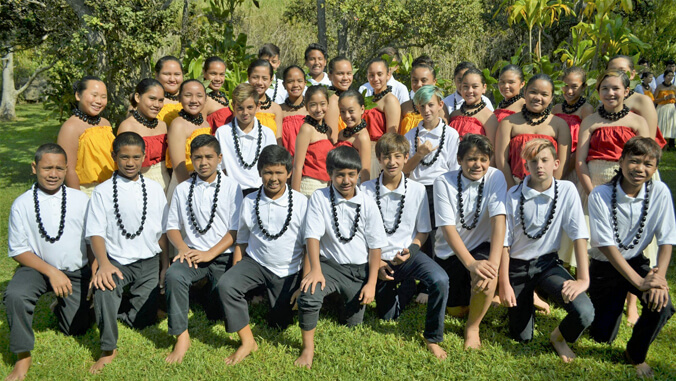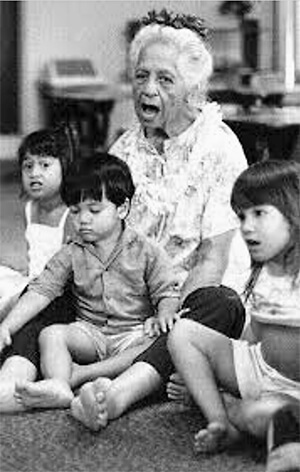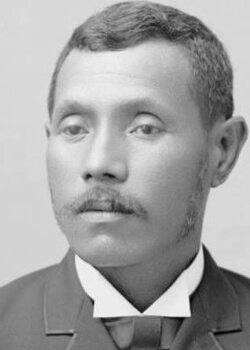

This essay by Hawaiian Language, Hawaiian Studies and Linguistics Professor William H. “Pila” Wilson is written as part of the second annual Hawaiian History Month created in honor of the birth of Queen Liliʻuokalani, the last sovereign monarch of the Hawaiian Kingdom.
Introduction
The fall 2021 school year marks the 20th anniversary of the enrollment of the first kindergarten class of Ke Kula ʻO Nāwahīokalaniʻōpuʻu (Nāwahī). Nāwahī is the demonstration laboratory school of Ka Haka ʻUla O Keʻelikōlani, University of Hawaiʻi at Hilo’s college of Hawaiian language. Extending back almost 40 years, Nāwahī’s history is a uniquely Hawaiian story that illustrates the tenacity of a core segment of Hawaiʻi’s population to the distinctive linguistic identity of these islands. Before examining the history of Nāwahī School, it is important to understand what distinguishes the school within the context of education in the United States.
Use of a non-English official language

Both Hawaiian and English are official languages in Hawaiʻi. Our state is the only one of the fifty states that provides for the use of a non-English language as the full administrative and operational language of education from preschool to the doctorate. The legislation that provides for these features is closely tied to the history of Nāwahī, which was established with a goal of demonstrating that it is possible for an Indigenous language to be successfully used for contemporary education in the 21st century. At present, the full preschool to doctorated Hawaiian language medium pathway is only available in the Hilo area.
Nāwahī’s administration is carried out through Hawaiian, as are all its assemblies, secretarial and health work, janitorial and grounds keeping, and also its graduation ceremonies and all other events. ʻĀina based education and all classes from preschool through to grade 12 are taught through Hawaiian. Hawaiian is even used as the medium of instruction for learning the Japanese language and also for all English language courses, the opposite of how Hawaiian is taught in English medium schools. Within the context of contemporary U.S. federal law, Nāwahī is a Native American language medium school designed to serve the unique educational needs of Hawaiian-speaking linguistic minority children.
Changes in federal law regarding the Indigenous languages of the United States is also related to the history of Nāwahī. In 1990, Congress reversed past federal policy of eradicating Indigenous languages when it passed the Native American Languages Act (NALA) recognizing the right of Native Americans, including Native Hawaiians, to education through the medium of their Indigenous languages. NALA was an initiative carried forward by Senator Daniel Inouye, head of the Senate Committee on Indian Affairs. As the basis for NALA he used wording developed in a resolution of the Hawaiʻi State Legislature requested by the ʻAha Pūnana Leo and Pūnana Leo families.
Beginnings with Pūnana Leo

In 1985, when the basis of Nāwahī began with the Pūnana Leo O Hilo language nest, the federal government was not supportive of Indigenous languages. Then, it was U.S. policy and practice to assimilate Indigenous children from their ancestral languages using English only boarding schools and day schools. Here in Hawaiʻi it was illegal to conduct public education through the medium of Hawaiian and had been since 1896, when those who overthrew the Hawaiian Monarchy closed down all Hawaiian medium public education.
Students of the first class to graduate from Nāwahī were enrolled in that Pūnana Leo. It was located on Kinoʻole Street in Hilo underneath a house owned by Mrs. Irene Haraguchi, a teacher who wanted her old family home to be used for educational purposes. Mrs. Haraguchi rented the home to the ʻAha Pūnana Leo with the option to eventually buy the property.
The non-profit ʻAha Pūnana Leo and associated parents were at that time in the process of going to the state legislature seeking to remove the 1896 ban on providing public education through Hawaiian and also to remove restrictions on private Hawaiian language schools like the Pūnana Leo not then placed, on private foreign language schools such as the Japanese language schools common in Hawaiʻi at the time. In May of 1986, with leadership from Clayton Hee, Peter Apo and Charles Toguchi, the legislature passed two laws. One allowed the Pūnana Leo rights similar to those of foreign language schools. The other provided for Hawaiian language medium education in the public schools.
Read about how the Hawaiʻi State Department of Education began integrating the program.

